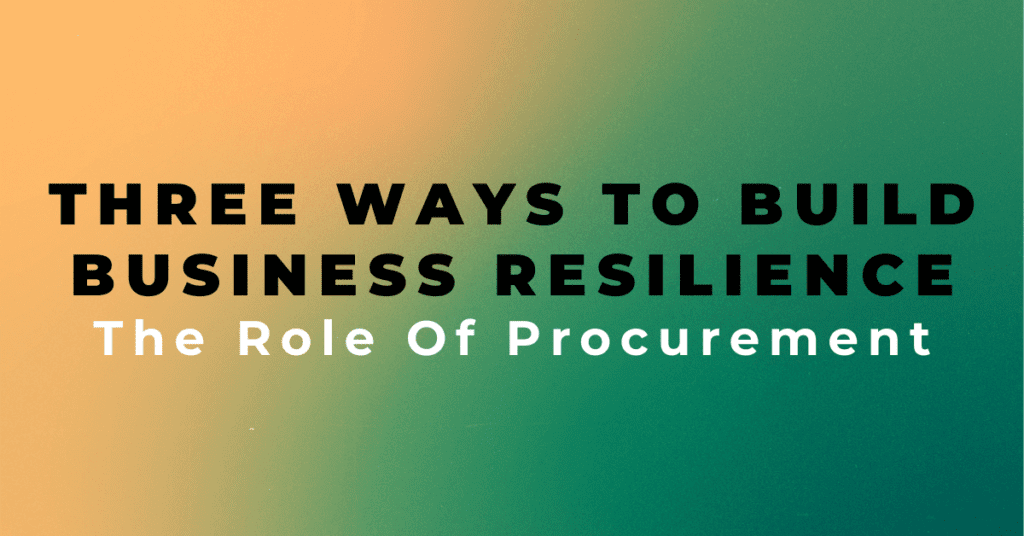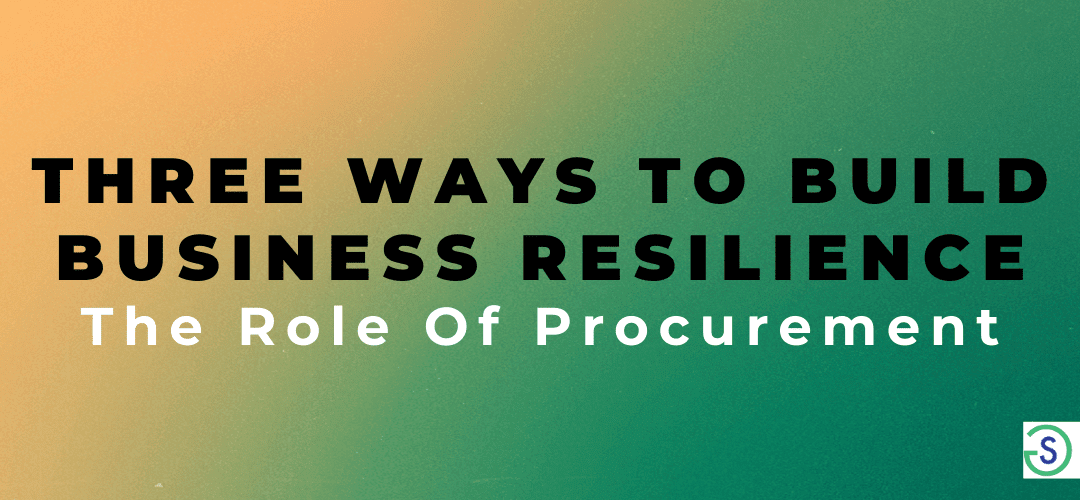
Building business resilience during difficult times, such as COVID-19, is an increasing concern in the supply chain. This unprecedented pandemic has proven that efficiency alone in business operations is not enough to stay resilient.
For decades, businesses have focused on a strategy called ‘just-in-time,’ which means only ordering and receiving just enough materials and products that they need for a short period from suppliers to minimize costs. However, as COVID-19 has made painfully clear, it has a significant flaw: that strategy doesn’t help businesses build resilience.
Therefore, plans must change to help businesses survive crisis times and stay resilient in the long term. Now is the time to consider shifting your strategic thinking from just-in-time to just-in-case.
In this blog, we will show you three ways to successfully and effectively make this switch by focusing on procurement.
But before digging into that, what do I mean by saying ‘just-in-case’ strategy?
As per the definition, Just-in-case (JIC) is an inventory strategy in which businesses keep larger standing inventories to prioritize risk management. In other words, JIC stocks up inventories ahead of time.
- Multi-sourcing:
Many of you may still remember the major natural disasters in Japan and Thailand in 2011, which caused supply chain disruptions worldwide and exposed businesses’ vulnerabilities as they relied on a single source of supply.
In response to these global events that threaten supply chain disruption, multi-sourcing is starting to gain popularity and become a part of the procurement strategy to mitigate risk and gain competitive advantage. The ultimate goal is not to let a business depend on any single vendor.
Supply chain leaders must know suppliers and their networks to optimize a multi-sourcing strategy. By doing so, they will easily categorize and monitor their suppliers not only by spend but also by the revenue impact if a disrupted event occurs. Besides, many companies use multi-sourcing to help lower prices. If you lock your firm in a single vendor, negotiating for better prices will be more challenging to remain competitive.
However, multi-sourcing can have drawbacks. One of the biggest ones is the increased complexity of the arrangement. As a result, businesses embracing this strategy need to rethink which resources they allocate to the critical task of supplier lifecycle management and how to make it more efficient.
Fortunately, the power of AI does change the game. The hassle of multi-sourcing processes is now automated and handled efficiently. For example, our SupplierGateway pre-qualification tool allows you to pre-qualify and filter suppliers based on your customized business rules. Besides, you can conduct online bids to get the best prices from your list of potential suppliers; of course, everything is automated. Your only task is to give us what products or services you need.
- Network Diversification:
The U.S.–China trade war has negatively impacted the economies of both the United States and China. In response, many companies have begun diversifying their sourcing and manufacturing bases by looking for suppliers outside China. Diversifying the supply chain will ensure you have a diverse supplier base, no matter what problem may arise. Also, a business is more likely to have the greatest possible choice of goods and services. According to the BCI Supply Chain Resilience Report, supply chain disruptions can cause significant damaging losses in terms of finances (62%), logistics (54%), and reputation (54%). This means the cost of disruption can be seen more as a cost of doing business.
With a global network of 500,000+ active registered suppliers, a business can utilize the SupplierGateway strategic sourcing tool to quickly identify prospective suppliers through our advanced search criteria and get all the information it needs from suppliers. Did I mention you can even search for suppliers with our mobile app?
- Build a Robust Procurement System:
The current pandemic has exposed the fragility and thin margins on which many global businesses run. Companies have realized that encouraging procurement teams to pursue efficiency by cutting down inventory costs and freeing up cash flow has negatively resulted in robustness, resilience, and effectiveness. Therefore, the challenge of effective supply chain management is to find agile solutions and balance between ‘just-in-time’ and ‘just-in-case’ processes while reducing risk as much as possible.
Today’s sourcing is being asked to move quickly to source the company’s raw materials or products. It’s a time-consuming process, not including for buyers to manage and improve relationships with vendors and optimize the performance. SupplierGateway procurement solutions allow a business to automate the process involving purchasing materials and products, managing the inventory, easily selecting and ordering a product, managing invoices, paying bills electronically, and many more. In other words, the message we try to deliver here is ‘Get More, Do Less’ by automating your purchasing process.
We’re excited to tell you more! Contact us today!












